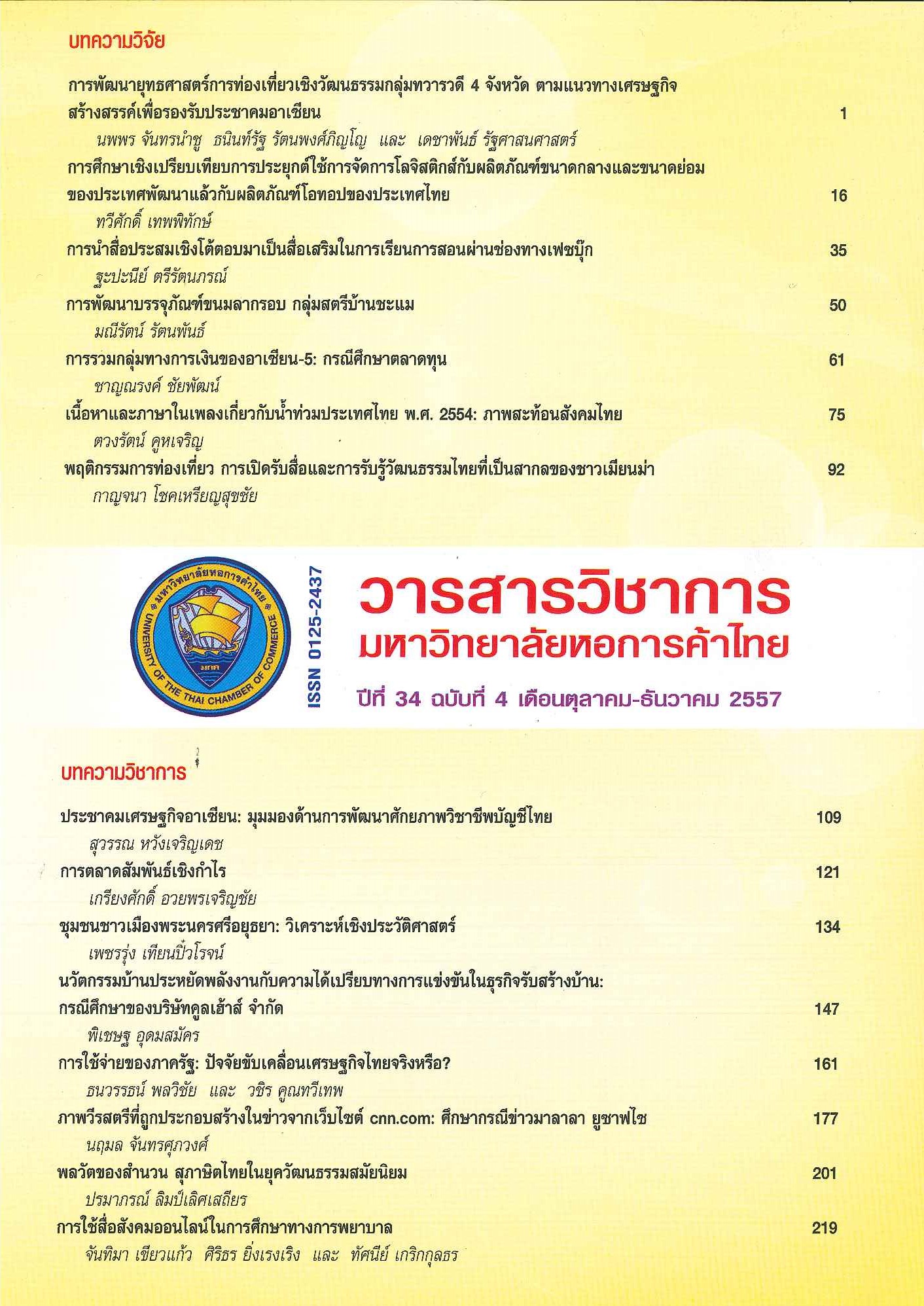Government Expenditure: A Driving Force in the Thai Economy?
Main Article Content
Abstract
The study aimed to understand whether or not the government spending stimulated Thailand’s economic growth. According to an economic theoretical concept, the overall government expenditure (G) is correlated with Gross Domestic Product (GDP), this study tested the relationship using Granger Causality Test, Cointegration and the Error Correction Model (ECM), using quarterly data of G and GDP at 1988 prices during Q1 of 2001 to Q4 of 2013. The study indicated that GDP and G significantly had short run and long run relationships. Using a Granger Causality Test, it found that a change in GDP would cause a significant change in G at a 0.05 percent level, which is consistent with Wagner's assumption rather than Keynes’ theory. Therefore, this study suggested the Thai government should set a level of government spending based on GDP instead of using the government expenditure to stimulate the economy during 2001 to 2013. However, this study also found that the overall government spending could stimulate the Thai economy both in the short and the long term.
Article Details

This work is licensed under a Creative Commons Attribution-NonCommercial-NoDerivatives 4.0 International License.
ลิขสิทธิ์ของบทความ
ผลงานที่ได้รับการตีพิมพ์ถือเป็นลิขสิทธิ์ของมหาวิทยาลัยหอการค้าไทย ห้ามมิให้นำเนื้อหา ทัศนะ หรือข้อคิดเห็นใด ๆ ของผลงานไปทำซ้ำ ดัดแปลง หรือเผยแพร่ ไม่ว่าทั้งหมดหรือบางส่วนโดยไม่ได้รับอนุญาตเป็นลายลักษณ์อักษรจากมหาวิทยาลัยหอการค้าไทยก่อน
References
Bharat, K., and Mahmoud, W. 2007. “Asymmetries in the Conditional Relation of Government Expenditure and Economic Growth.” Journal of Applied Economics 39, 18: 2303-2322.
Dimitrios, S. 2006. Wagner’s law in 19th Century Greece: a Cointegration and Causality Analysis. Athens, GR.: Bank of Greece.
Enders, W. 1995. Applied Econometric Time Series. New York: John Wiley & Sons.
Gujarati, Damodar. 1995. Basic Econometrics. Singapore: McGraw-Hill.
Gustava, A.M., and Alfonso, N. 2007. “Income Taxes, Public Investment and Welfare in a Growing Economy.” Journal of Economic Dynamic and Control 31,10: 3348-3369.
Mahmoud, W. 2004. “Economic Growth and Government Expenditure: Evidence from a New Test Specification.” Journal of Applied Economics 36,19: 2125-2135.
Paresh, K., and Seema, N. 2006. “Government Revenue and Government Expenditure Nexus: Evidence from Developing Countries.” Journal of Applied Economics 38, 3: 285-291.
Shiha, D. 1998. “Government Expenditure and Economic Growth in Malaysia.” Journal of Economic Development Vol. 23: 71-78.
Sinha, D. 2007. Does the Wagner’s Law hold for Thailand? A Time Series Study [Online]. Available: http://mpra.ub.uni-muenchen.de/2560/
Xiaoming, L. 2001. “Government Revenue, Government Expenditure and Temporal Causality: Evidence from China.” Journal of Economic 33, 4: 485-497.


